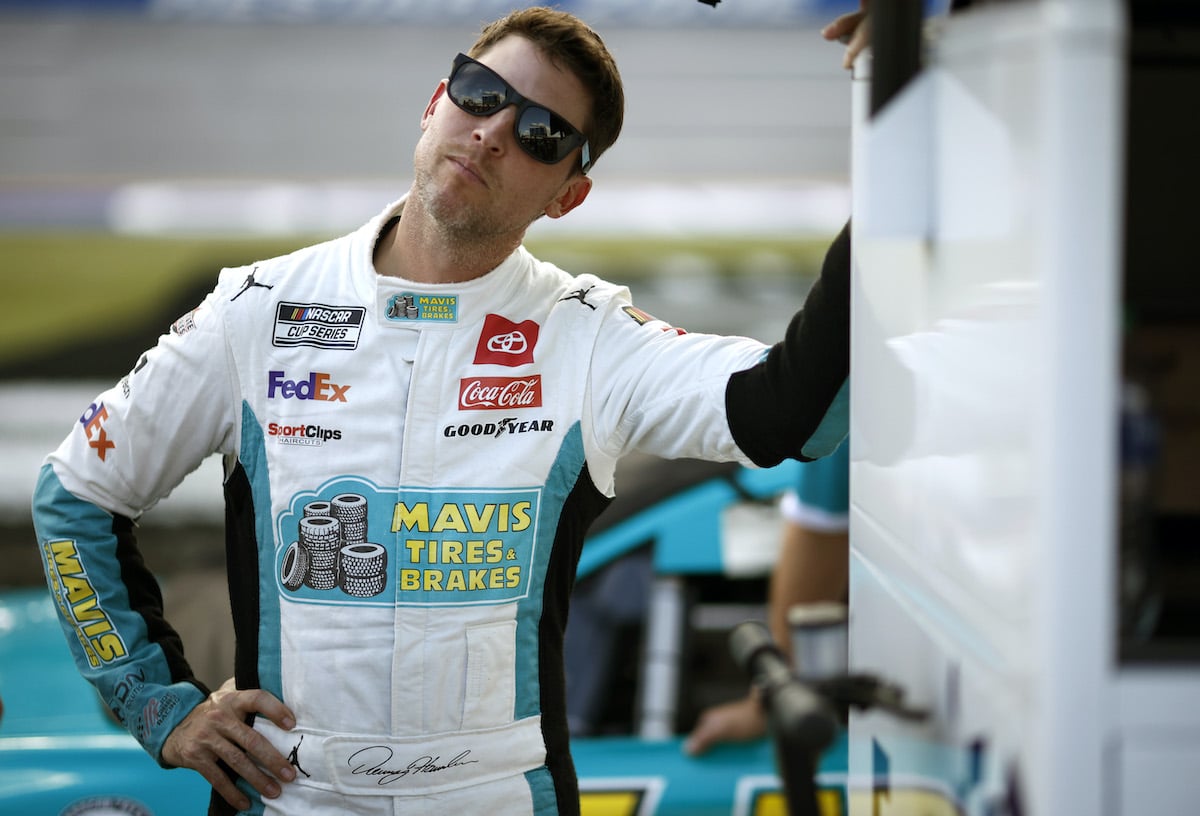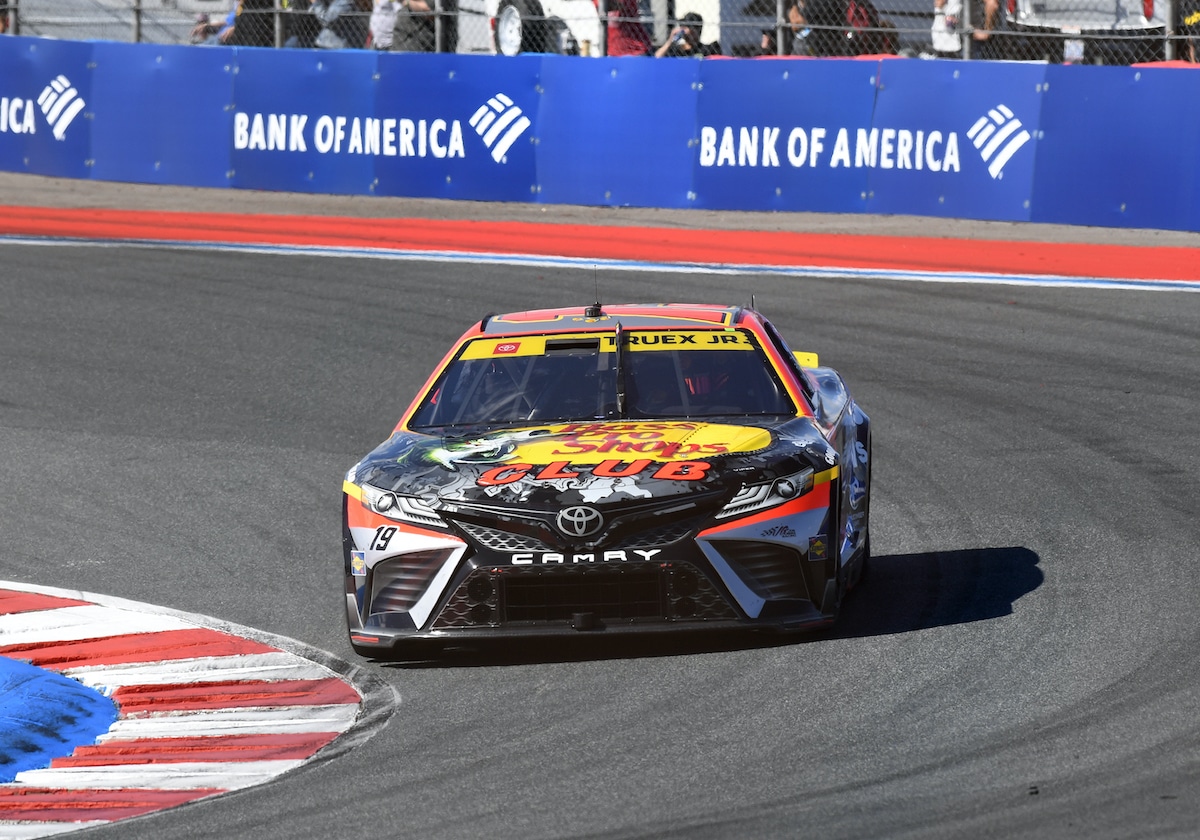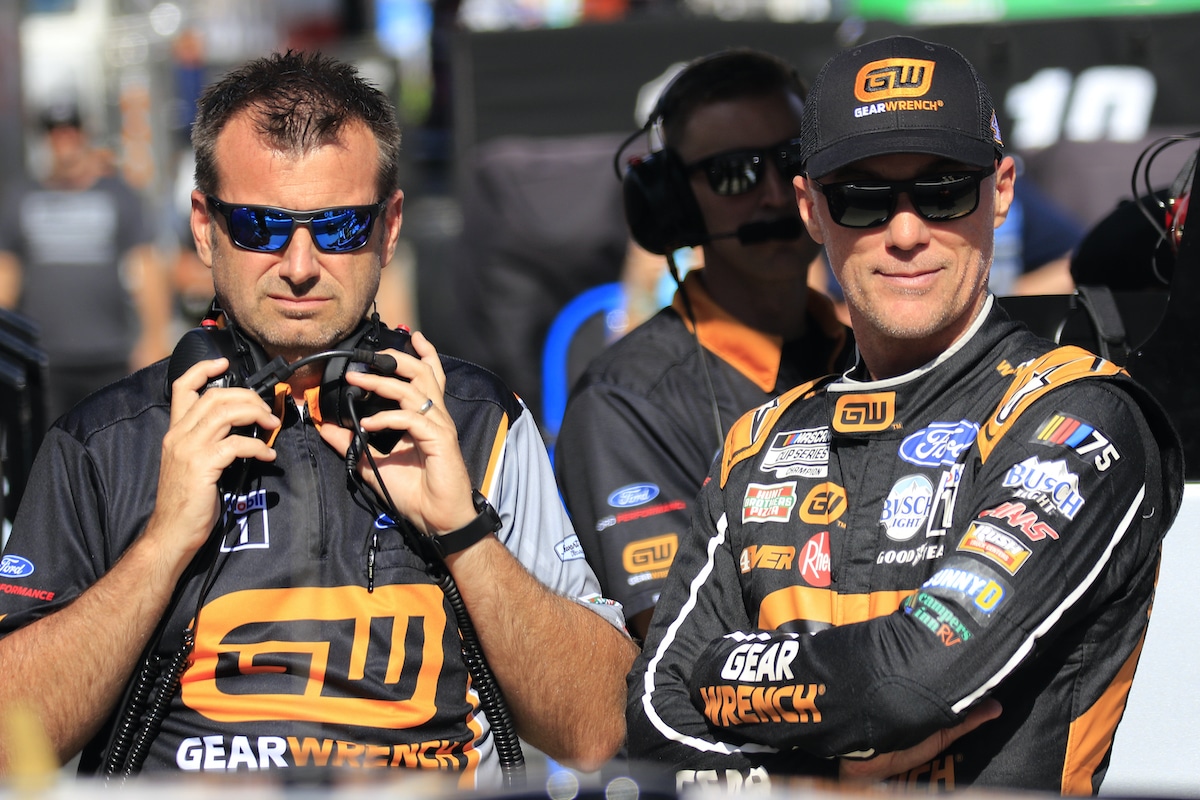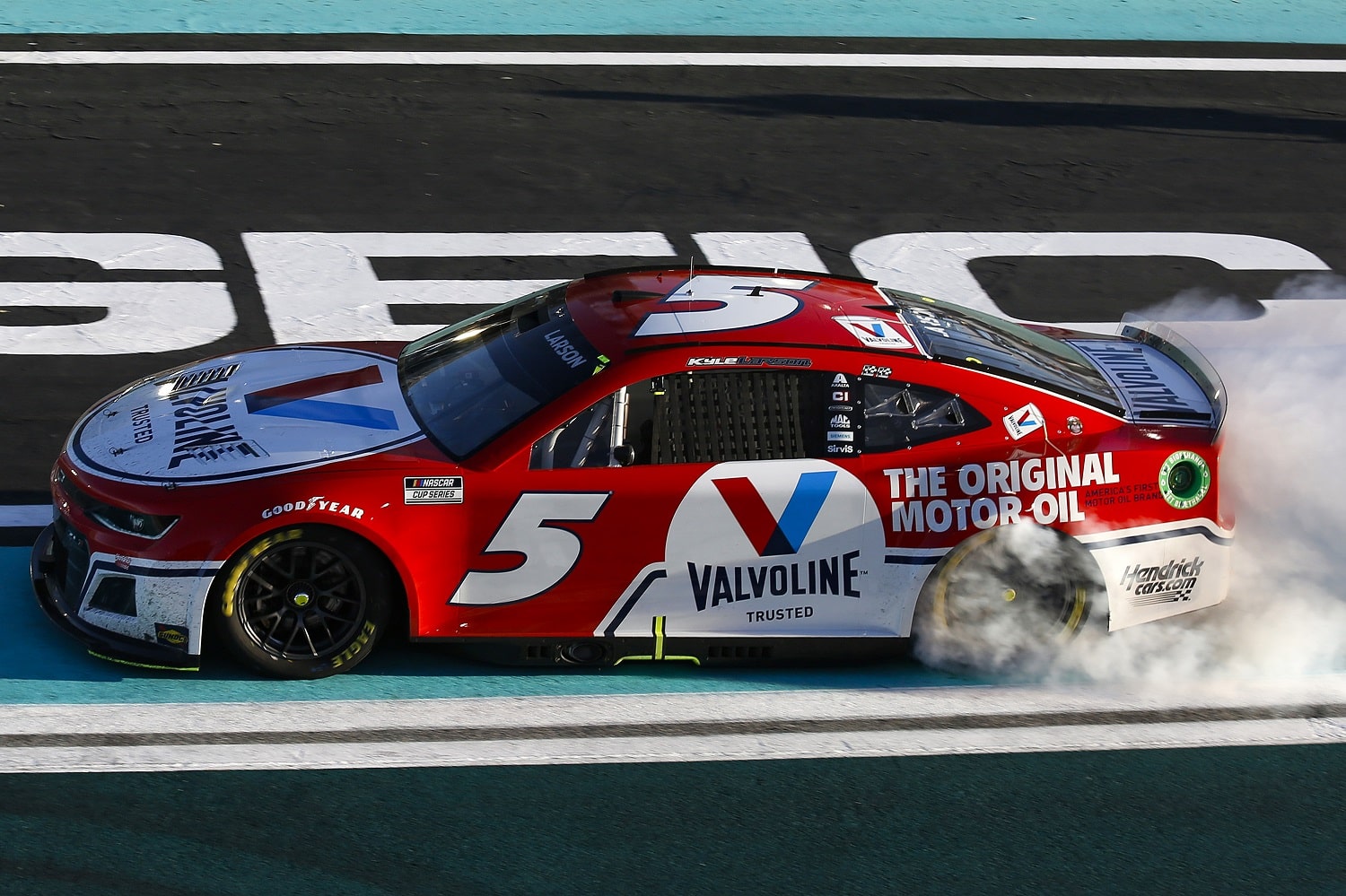
Kyle Larson Throws a Wrinkle Into a Lesser-Known NASCAR Championship Battle
Casual fans, the ones who know Kurt and Kyle Busch have both won NASCAR championships but couldn’t necessarily tell them apart in side-by-side photos, are trying to get their arms around why 36 cars will start Sunday but only eight are in the playoffs.
It happens every year, and veteran fans help them understand the reality of sponsorship money and how sending eight cars to the starting grid would make for phenomenally boring racing, even on a short track like Martinsville.
And then Kyle Larson comes along and turns the Championship 4 into the Championship 5, where he could win the race and lots of money for his team but not succeed in defending the title he captured a year ago in Phoenix.
Pass the aspirin, please.
Kyle Larson has thrown a wrinkle into the NASCAR owners’ championship
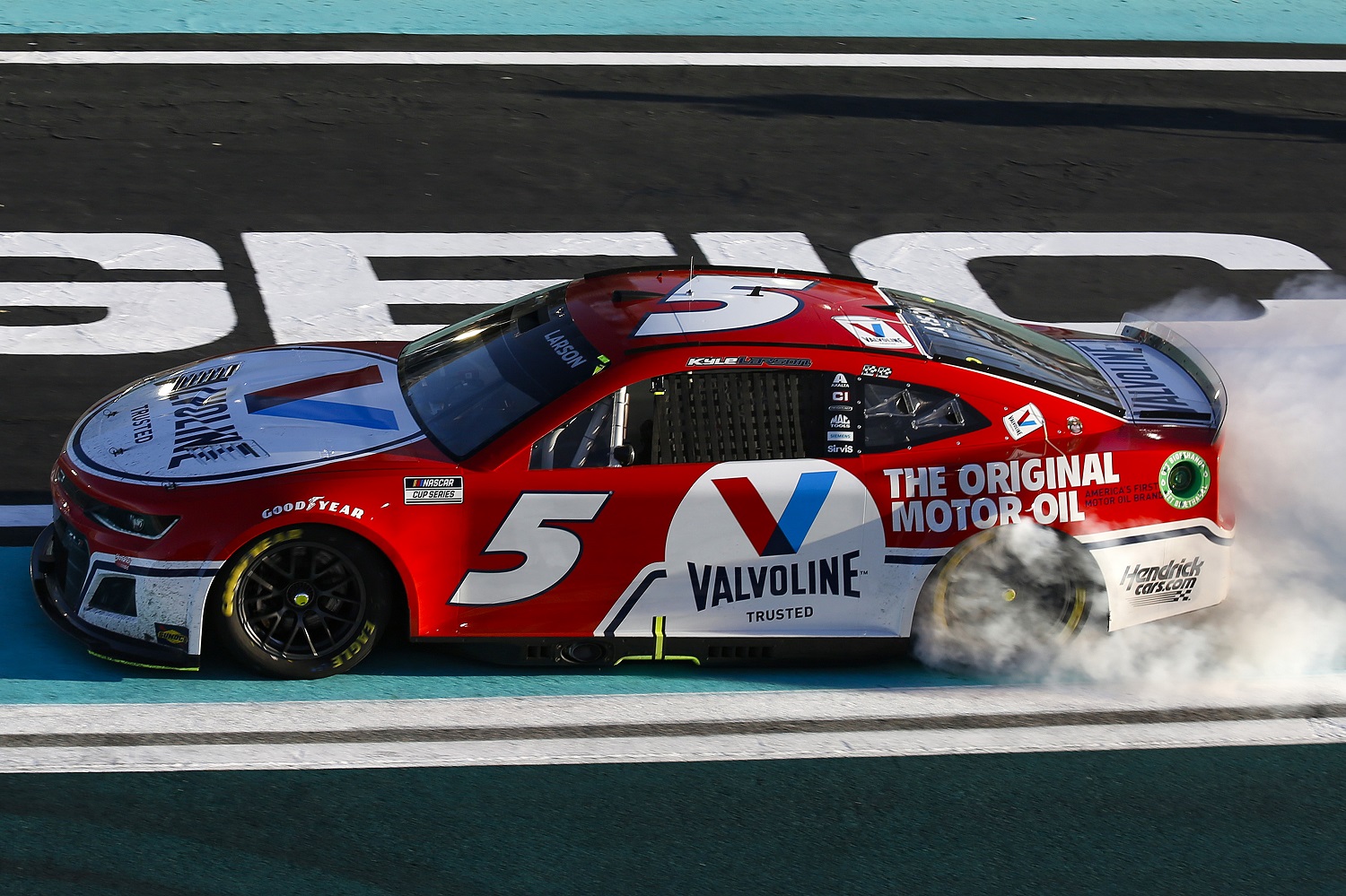
Sunday’s race at Martinsville pares the drivers in the round of eight down to the quartet that will compete for the Cup Series tile the following weekend in Phoenix in what NASCAR calls the Championship 4. Joey Logano is already in because he won two weekends ago in Las Vegas. However, Kyle Larson added a level of complexity to the scheduled proceedings in Phoenix on Nov. 6 by winning over the weekend at Homestead-Miami.
The crazy finish at the Charlotte Roval in the sixth playoff race eliminated Larson from the driver playoffs but didn’t knock his No. 5 Chevy out of the hunt for the owners’ championship. We can thank Kurt Busch and Ryan Blaney for that quirk.
In a normal season, the driver and owner competitions amount to one and the same. But when Busch announced he was not physically able to participate in the playoffs (he qualified by winning at Kansas), it opened the door for Ryan Blaney. Blaney will have his work cut out for him this weekend, but he’s still in the hunt for the drivers’ championship.
However, points in the owners’ championship standings apply to the car and not the driver. Busch’s No. 45 Toyota had enough points to continue competing for the owners’ championship, and 23XI Racing moved Bubba Wallace into Busch’s car to vie for the title.
Though Blaney has made it to the final eight in the drivers’ championship, his car hasn’t been part of the owners’ playoffs. That allowed Larson’s No. 5 Chevy to remain one of the three Hendrick Motorsports cars in the top eight even after his misfortune in Charlotte. That’s how the win at Homestead-Miami put that car into the owners’ Championship 4.
Complicated? Absolutely.
The owners’ championship is a big deal in NASCAR
The highest-placing Championship 4 driver at Phoenix will earn the crown Kyle Larson snared a season ago with the help of a flawless final pit stop. With it comes a wild celebration, followed by TV appearances, and likely an endorsement opportunity or two. There is likely also bonus money spelled out in his contract with the team and sponsors.
However, the real money at stake is tied to the owners’ championship because those standings are the basis by which NASCAR distributes a large, albeit unspecified, percentage of its purse money.
Hendrick Motorsports knows going into Phoenix that Larson’s car can finish no lower than fourth in the owners’ standings. With Chase Elliott’s No. 9 Chevy and William Byron’s No. 24 Chevy still in the running, HMS is staring at a potential lucrative windfall.
Meanwhile, there are two other ongoing tiers of competition. The 12 cars that made it into the owners’ championship playoffs but don’t qualify for the Championship 4 can finish anywhere from fifth to 16th in points. That’s why 23XI Racing called on John Hunter Nemechek to sub for Bubba Wallace in Kurt Busch’s No. 45 Toyota – You got all that? – over the weekend at Homestead-Miami. It’s also why Hendrick summoned Noah Gragson to fill in for Alex Bowman this month. The HMS No. 48 Chevy may be 15th in the owners’ standings now, but two strong showings could boost that car to as high as 10th. That means more money for HMS.
It used to be a lot more complicated in the ‘old days’
Kyle Larson’s status as an also-ran for the drivers’ championship but a contender for the owners’ championship in his No. 5 Chevy may be rare, but it’s not unprecedented. Nor is it a function of the playoff system NASCAR installed two decades ago.
Instead, point to the start of the “modern era” in 1972. That’s when NASCAR pared more than a third of the races from its annual schedule, moving out of remaining small dirt tracks, and adopted stronger marketing approaches. That also ushered in firmer relationships between drivers, their teams, and sponsors.
Though there will always be drivers bouncing around during the season as a few owners fill unsponsored slots on the calendar with drivers who can bring money with them, it was more common decades ago.
Racing America points to Joe Weatherly in 1963 as an example. Going into the 1963 Cup Series season as the defending champion didn’t constitute job security with a single team for Weatherly, just steady work for many. Competing in 53 of the 55 races, Weatherly drove for nine teams, including Bud Moore Engineering and Petty Enterprises.
At season’s end, Weatherly stood atop the drivers’ standings again, but his owner points were scattered everywhere. Instead, Wood Brothers; No. 21 Ford captured the owners’ championship as the team employed five drivers at various times in the season.
Got a question or observation about racing? Sportscasting’s John Moriello does a mailbag column each Friday. Write to him at [email protected].
Have thoughts on this topic? Keep the conversation rolling in our comments section below.
